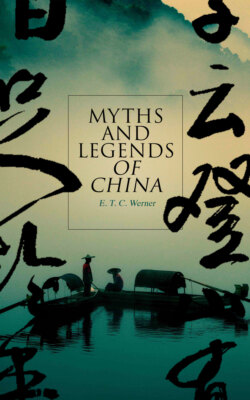Читать книгу Myths and Legends of China - E. T. C. Werner - Страница 19
На сайте Литреса книга снята с продажи.
General Government
ОглавлениеThe general division of the nation was into the King and the People, The former was regarded as appointed by the will of Heaven and as the parent of the latter. Besides being king, he was also law-giver, commander-in-chief of the armies, high priest, and master of ceremonies. The people were divided into four classes: (1) Shih, Officers (later Scholars), consisting of Ch'ên, Officials (a few of whom were ennobled), and Shên Shih, Gentry; (2) Nung, Agriculturists; (3) Kung, Artisans; and (4) Shang, Merchants.
For administrative purposes there were at the seat of central government (which, first at P'ing-yang—in modern Shansi—was moved eleven times during the Feudal Period, and was finally at Yin) ministers, or ministers and a hierarchy of officials, the country being divided into provinces, varying in number from nine in the earliest times to thirty-six under the First Emperor, 221 B.C., and finally twenty-two at the present day. At first these provinces contained states, which were models of the central state, the ruler's 'Middle Kingdom.' The provincial administration was in the hands of twelve Pastors or Lord-Lieutenants. They were the chiefs of all the nobles in a province. Civil and military offices were not differentiated. The feudal lords or princes of states often resided at the king's court, officers of that court being also sent forth as princes of states. The king was the source of legislation and administered justice. The princes in their several states had the power of rewards and punishments. Revenue was derived from a tithe on the land, from the income of artisans, merchants, fishermen, foresters, and from the tribute brought by savage tribes.
The general structure and principles of this system of administration remained the same, with few variations, down to the end of the Monarchical Period in 1912. At the end of that period we find the emperor still considered as of divine descent, still the head of the civil, legislative, military, ecclesiastical, and ceremonial administration, with the nation still divided into the same four classes. The chief ministries at the capital, Peking, could in most cases trace their descent from their prototypes of feudal times, and the principal provincial administrative officials—the Governor-General or Viceroy, governor, provincial treasurer, judge, etc.—had similarly a pedigree running back to offices then existing—a continuous duration of adherence to type which is probably unique.
Appointment to office was at first by selection, followed by an examination to test proficiency; later was introduced the system of public competitive literary examinations for office, fully organized in the seventeenth century, and abolished in 1903, when official positions were thrown open to the graduates of colleges established on a modern basis.
In 1912, on the overthrow of the Manchu monarchy, China became a republic, with an elected President, and a Parliament consisting of a Senate and House of Representatives. The various government departments were reorganized on Western lines, and a large number of new offices instituted. Up to the present year the Law of the Constitution, owing to political dissension between the North and the South, has not been put into force.
